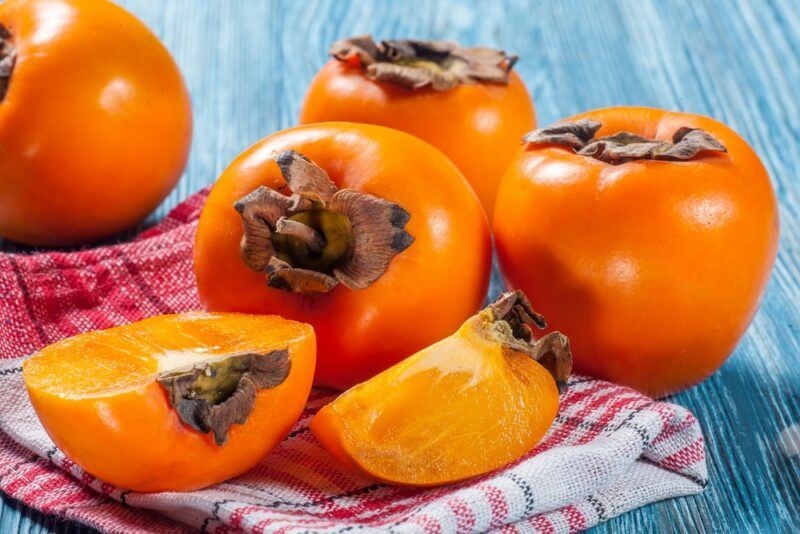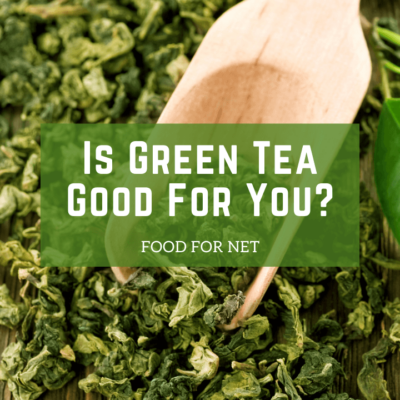
You’ve heard about tannins, right? The plant-based compounds are most commonly associated with red wine and black tea. However, those aren’t the only sources of tannins. There are plenty of other foods with tannins too, not to mention the various tannin rich drinks.
Tannin levels also vary within groups of foods and drinks. So, if you don’t like the astringency or bitterness of tannins, you might find yourself looking for white tea or low tannin red wine.
Don’t write tannins off just yet though. Even the bitterness isn’t entirely bad, as this adds a depth of flavor to your drinks. Tannins may even be good for you. They come with some risks, true, but for most people the potential benefits far outweigh these risks.
Tannin Rich Foods And Drinks (With Pictures!)
Black Tea

Black tea is one of the richest sources of tannins. This shouldn’t be surprising, given that black tea has such a strong bitter flavor.
Not only that, but most of the active compounds in the tea are tannins. This suggests that tannins are responsible for many of the health benefits of tea.
Tannin levels do vary depending on the variety of tea you’re consuming and the growing conditions. Steeping time influences the tannins in your tea too – so you can minimize your tannin intake by keeping the steeping time short.
Grapes

Here’s one you could have guessed – grapes contain tannins. Most of these tannins are found in grape skins and seeds, plus smaller amounts in grape stems.
The tannin content is highest while the grape is immature. The tannin content decreases as the grape ages, but doesn’t disappear entirely. You still get plenty of tannins even in fully mature grapes.
Interestingly, white and red grapes are similar in their tannin content. White wines are lower in tannins than red, but this is because of how they’re made, not the type of grape that’s used.
Red Wine

Some of the tannins in grapes end up in red wine. The tannin content is influenced by multiple factors, particularly how long the skins and seeds are left in the wine during fermentation.
Red wine tends to be higher in tannins than other types, as it relies heavily on grape skins. However, there’s still considerable variation – and some red wines are much higher in tannins than others.
The most tannic red wines tend to be those that have a large and dense flavor, including cabernet and Nebbiolo. Wines that taste weaker, like pinot noir, are generally lower in tannins.
You can get a sense of the tannin levels by paying attention to how your mouth feels. The astringent properties of tannins mean that high tannin wines will noticeably dry your mouth out, while low tannin wines have a more subtle effect.
White Wine And Rosé

While tannins are most strongly associated with red wine, white wine and rosé still contain tannins.
In fact, if the grape skins are left in the fermentation batch for a long time, the wine can end up being just as tannin heavy as red wine.
Additional tannins can come from aging wine in wooden barrels. This practice is more common for red wines, but some white wines are aged this way as well.
Dark Chocolate

Who doesn’t love chocolate? It’s a delicious natural mood booster that comes in many forms.
Dark chocolate (with a cocoa percentage of at least 70%, preferably higher) can also be incredibly healthy, with the potential to decrease inflammation, improve your cognition, and even promote heart health.
There are plenty of tannins too. These contribute to the dark color of the chocolate and its bitterness.
Cocoa

The tannins in dark chocolate come from the cocoa bean. So, anything that uses cocoa as an ingredient is going to contain some tannins. This includes milk chocolate, cocoa powder, chocolate milk, and even chocolate liquor.
The tannin content will be directly proportional to the cocoa content. So, more cocoa means more tannins.
Coffee

Coffee is an interesting case here.
The bitterness and astringency suggest that there are plenty of tannins present. Many blog posts and studies promote this perspective too.
Yet, it’s not actually clear whether coffee contains tannins or not. Testing the presence of tannins in coffee is surprisingly complex and there isn’t a clear cut answer.
Other Types Of Tea

While black tea is most famous for its tannin content, all tea contains some tannins
If you love tea, but are concerned about tannins, you could turn to green tea or white tea. White tea has the lowest amounts of tannins, but the flavor may be too mild for your needs.
Herbal Teas

Herbal teas often seem benign. After all, they’re just made from plants and tend to be caffeine free.
While such teas often are very good for you, they have their dark side as well, including how they can interact with medication. Even if you’re not taking medication, overconsumption of some herbal teas can easily lead to side effects.
Some herbal teas also contain tannins, including chamomile, cinnamon, peppermint, and hibiscus tea. This is because the herbs themselves are sources of tannins.
Because this area hasn’t been researched heavily, it’s not clear how the tannin levels compare to black tea or even which herbal teas contain tannins. That said, herbal teas aren’t as astringent as black tea, so they’re likely to be lower in tannins.
Yerba Mate

Yerba mate deserves a special mention here. This is a herbal tea that’s made from the species Ilex paraguariensis. The tea is traditionally consumed in a gourd cup, using a metal straw with a filter.
The tea is incredibly unusual, as the caffeine content is similar to a cup of coffee. Many people even prefer yerba mate over coffee, as the energy boost is often gentler and they don’t experience as much jitteriness.
However, yerba mate also contains a decent amount of tannins, more than many other foods on this list.
Yerba mate comes with some risks too, suggesting that you need to be cautious with the serving size and frequency of your yerba mate consumption.
Unripe Fruit

Unripe fruit is often quite high in tannins, making it highly astringent. This is part of the plant protecting itself, as the goal is to have fruit eaten when it is ripe, not beforehand.
Most of us don’t eat unripe fruit anyway, so these tannins aren’t a huge issue. There are a few exceptions though, like unripe bananas, which are often eaten for their resistant starch content.
Many Berries

Tannin levels tend to decrease as fruit ripens, so ripe fruit is often fairly low in tannins.
Not always, though. Many types of berries are decent sources of tannins. Strawberries, raspberries, and blackberries are all ones to watch out for. Acai berries and cranberries are notable too.
Apples

Few people know that apples contain tannins. Not only that, but we get a lot of tannins from apples and apple juice (partly because apples and apple juice are so common).
Red fleshed apples are particularly significant for tannins, as are bittersweet apples. There’s also variation based on how the apples were grown, so it’s difficult to predict which apples will be high in tannins.
Some cider apples are even higher in tannins, as they’re chosen to add some bitterness and prevent the cider from being too sweet.
Bananas

The tannin content is highest in green bananas and decreases as the fruit ages. This is something to be aware of if you’re planning to eat green bananas regularly for their resistant starch.
Ripe bananas are much lower in tannins, but they’re likely to still contain some.
Persimmon

Like bananas, persimmons are sometimes eaten when they’re underripe. They can be delicious this way and the bitterness of the tannins complements the rest of the flavor profile.
You’ll need to stick with ripe persimmons if you’re worried about the tannin content. Even then, there might still be some tannins present.
Olives

Olives are another unexpected source of tannins.
There are also tannins in olive leaves, so you’re likely to find some in olive leaf extract as well. Similarly, tannins will be present in most olive products, including olive oil.
These tannins aren’t bad though. Seriously. We know that olives are incredibly healthy. The tannins might even be responsible for some of those health benefits.
Pomegranates

Pomegranates are an unusual type of fruit. Instead of the traditional flesh, they contain tiny sacs that contain a seed and plenty of tart juice. These little sacs are called arils and they’re delicious on their own or sprinkled on top of meals.
Pomegranates are a little tricky, as you need to separate the arils from the bitter flesh of the pomegranate. Doing so can be frustrating, but gets easier as you get used to the process.
Besides, pomegranates are well worth the effort. Not only is the juice delicious, but it comes with some interesting benefits.
Beer

Beer tends to be relatively low in tannins, as brewers don’t want the bitterness of tannins in the final product. Still, there is often somewhere between 150 and 330 mg of tannins per liter of beer.
Most of these tannins come from barley husks, although there are some tannins from the hops as well.
Nuts

Tannins are sometimes found in nuts too. These are generally found in the skin, particularly in walnuts and almonds. Other types of nuts aren’t as bad for tannins, but few are completely tannin free.
You can decrease the bitterness of the nuts and some of the tannins by soaking and then rinsing them.
Nuts only have subtle bitter or astringent properties, suggesting that the tannin content isn’t high either. So, it should still be possible to have some nuts, even if you’re trying to avoid tannins.
Rhubarb

While tannins aren’t very common in vegetables, you do find them in rhubarb. This delicious vegetable has plenty of other benefits too, including being a rich source of vitamin K, being high in fiber, and offering plenty of antioxidants.
It’s also worth being careful with rhubarb, as it is high in oxalates. These natural compounds increase the risk of kidney stones. They’re even more concerning if you’ve had a kidney stone in the past.
Some Types Of Beans

Interestingly, you can also find tannins in beans. The tannin content ranges from 0% to 2.0%, based on the type of bean.
This isn’t huge, especially as black tea has an average of around 13% tannins. Still, these tannins are still relevant. Think of how they’d add up if you used beans in most of your meals.
Kidney beans, black grams, mung beans, and faba beans are some of the highest tannin options. You’ll find tannins in other beans too, including black eyed peas and pinto beans.
Soaking beans is often promoted as a way to decrease the tannin content. However, it’s unclear whether doing so is effective. You could also sprout the beans, as doing so improves digestibility (like with mung bean sprouts).
Lentils

Beans contain tannins, so it’s hardly surprising that lentils do as well. This can make things a little tricky on a vegetarian or vegan diet, as legumes will be one of your main sources of protein.
Legumes don’t just contain tannins either. They have other types of anti-nutrients too, ones that can decrease the absorption of more nutrients than just iron. The anti-nutrient content is highest in raw lentils, but there are still some in cooked lentils as well.
To protect yourself, it’s best to make sure that some of your meals are legume free. These meals help to offset any nutrients missed from your legume-based meals.
Interestingly, there are some zero tannin lentils. These aren’t genetically modified and they have a clear seed coat. The seed coat normally contains tannins, so having a clear coat dramatically reduces the tannin content.
Chickpeas

Before we switch gears, there’s one more legume to talk about – chickpeas.
While hummus is the most famous way to use chickpeas, there are also other options, including chickpea salads and chickpea stews. You can even roast and season chickpeas to create a crunchy snack (one that contains less fat and calories than nuts).
Soybeans

We’ve mentioned a few legumes already, so it shouldn’t be surprising that soybeans also contain tannins.
This means that any soybean derived products are likely to have some tannins as well (such as soy milk and tofu). However, the tannin content of such products will vary depending on how they’re processed. In fact, highly processed soybean products might be fairly low in tannins.
Peas

While fresh peas look and taste different than other legumes, they have some features in common, including the presence of tannins. However, they’re still delicious and a valuable addition to your diet.
The same can be said of many of the foods on this list. Honestly, the presence of tannins shouldn’t be a reason to avoid some foods entirely.
Ways To Reduce The Tannin Content Of Food
Soaking
Sometimes soaking can help to decrease the tanning content of food. The process also makes some of the nutrients much more bioavailable.
This technique is most often used with dried beans. While there’s some debate about the effectiveness of doing so, the texture of beans can be better after soaking. Soaking beans also dramatically reduces their cooking time, which can be incredibly helpful.
Peeling
Some foods can be peeled, which may decrease their tannin content. How well this works will depend on the type of food and where the tannins are found.
For example, you might be able to lower tannin content by peeling apples or even beans. But peeling berries or tea leaves doesn’t even make sense.
Cooking
Tannin content might also decrease during cooking. This is a good reason to focus on cooked food rather than raw food. Combining this with soaking and peeling could decrease the tannin content dramatically.
Choosing The Variety Carefully
Finally, pay attention to the variety that you’re choosing. Often some varieties are higher in tannins than others.
Color is a good indication here. For example, white wine and white beans tend to be lower in tannins than red wine and red beans. Similarly, white chocolate is lower in tannins than milk or dark chocolate.
More Information About Tannins

What Are Tannins?
Tannins are basically a class of plant-based compounds. However, they’re also a bit unusual.
In particular, molecules are normally classified based on their structure. This isn’t the case for tannins. They’re classified by their protein binding behavior.
This makes things tricky, as you can’t look at a chemical structure and say that this molecule will be a tannin. You need to test instead.
But… different tests have different outcomes, because they contain different sets of proteins. Some foods and drinks are easy. They’ll test positive across most tests. Others are much trickier.
For example, there’s little doubt that black tea and red wine are rich in tannins. Coffee is much more debatable, as tests are incredibly inconsistent.
Are Tannins Healthy?
Tannins come with a host of health benefits. They have both antioxidant and anti-inflammatory effects, which means they can reduce your risk of various diseases.
They’ve also been linked to better blood sugar levels, heart health improvements, and the potential to help your brain.
However, there are some risks too. The biggest is that tannins can reduce your iron absorption. This effect can cause serious harm if you’re having tannin rich foods or drinks with most meals.
Tannins may also lead to headaches, nausea, and constipation in people who are sensitive. If you experience such issues regularly, you might need to decrease your tannin consumption.
Thankfully, if you’re healthy, the benefits of tannins far outweigh the issues. The foods we’ve highlighted also come with numerous health benefits of their own, making them great additions to your diet.
Completely avoiding tannins isn’t realistic anyway. You’d need to be ultra-cautious with all plant-based foods, including herbs, spices, legumes, fruit, and even some vegetables.
If you are sensitive to the side effects of tannins, it may be best to simply avoid tannin rich options, like black tea and red wine.
What Are The Side Effects Of Tannins?
Large amounts of tannins mostly have digestive side effects, including stomach cramps, nausea, and vomiting. Some people also experience headaches from tannins, which can be frustrating.
Tannins can also inhibit iron absorption. This shouldn’t be an issue if your iron intake is decent. But, if you’re getting low amounts of iron in your diet and consume high amounts of tannins, then you might not be getting enough iron. This could lead to symptoms of iron deficiency, like fatigue and dizziness.
Are Tannins Good For You?
Tannins get a bad rap, but they’re not as bad as they seem. They even offer a variety of health benefits, such as helping to decrease inflammation and promoting heart health.
The biggest issues are if you’re consuming a large amount of tannins regularly or if you’re sensitive to tannins. In these situations, decreasing your tannin intake may be a good idea. Still, there’s no need to avoid tannins entirely.

















 22 Tyramine Rich Foods You May Need To Be Careful With
22 Tyramine Rich Foods You May Need To Be Careful With
This article is helpful to me; Thank you